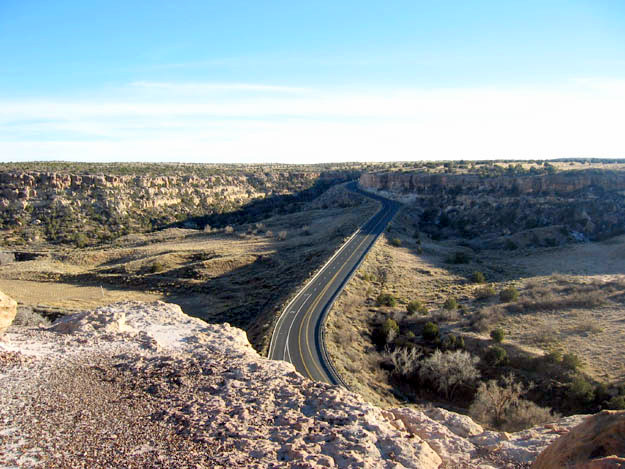|
||
FIRST MESA ----------------------------------------------------------------------------------------------------------------------------------------------------------------------------------------------------------------The dam has a large amount of risk associated with it, most notably the build up of silt and sediment from the Navajo sandstone that ring the reservoir and line the cliffs that the Colorado has carved over the millennium. The silt and sediment slowly fills Lake Powell, reducing its capacity. The lifespan of the dam at this point is by some estimated at 85 to 100 years at which point the breaching of the dam would cause a mega tsunami downstream that would crest Hoover dam by over 200 feet. Because of these risks associated with the dam and the resulting Lake Powell the project was termed “America’s most regretted environmental mistake,” at its completion by the then executive director of the Sierra Club David Brower -------------------------------------------------------------------------------------------------------------------------------------------------------------------------------------------------------------------------------------
A few miles outside of Page is another power plant that uses the water from Lake Powell to cool its turbines which allow it to function in the midst of a desert. The Navajo Generating Station produces 16.5 billion KW per year and releases 19.9 million tons of CO2 into the atmosphere each year. The energy produced by the plant serves over 3 million homes every year in the desert southwest. The plant also employs nearly 600 Navajo workers when you combine the efforts of those at the Kayenta Mine where the coal is mined for use at the plant. Because of this and the lack well paid jobs in Navajo country, the plant and mine are a slippery slope for those in the Native community to talk about. In one respect it produces high paid, skilled jobs. But in another it is digging into the heart of country that to many Native Americans in the region consider sacred. Talking to Native Americans about this is virtually impossible as an outsider. On so many occasions I was told that this issue and others involving mining or energy production are “very sensitive” to the Hopi. -----------------------------------------------------------------------------------------------------------------------------------------------------------------------------------------------------------------------------------------------------------
The Navajo plant began producing power in 1975. As part of its development the plant required the construction and hanging of nearly 800 miles of 500 kilovolt lines so generated power could reach its intended target of Phoenix, Arizona. Also interesting is how the turbines at Navajo are cooled. As Lake Powell is a reservoir in a sense without a flow or current to it, the Navajo plant does not expel its waste water back into the body it originated from like most plants situated on a river or coastline. When this usually happens it will raise the water temperature of that body of water. In some cases, on the Hudson river, during summer time when flows are lower, the temperature will raise 24ºF or 13ºC in the vicinity of the plants and down river from them. How this impacts the ecosystem in that vicinity is hardly seen as it mostly occurs underwater. But imagine the effect is has on fish and other wildlife in the area. The Navajo plant, on the other hand, uses cooling towers to dissipate the heat generated but in doing so about 30,000 acre feet of water per year evaporates in an area where water is already precious and to the Hopi, considered sacred. -----------------------------------------------------------------------------------------------------------------------------------------------------------------------------------------------------------------------------------------------------------------
Tomorrow, I’ll look at the mine on Black Mesa. To both the Hopi and Navajo a place considered sacred.
|
||

All photographs are copyright and must not be used for commercial purposes without written permission.
